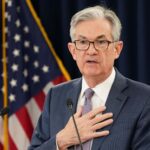Treasury yields experienced a significant surge following the release of stronger-than-expected January employment data, leading to a reevaluation of expectations for Federal Reserve interest rate cuts in the near term. Short-dated Treasuries, particularly sensitive to shifts in monetary policy, led the upward movement, with two- to five-year yields rising by 20 basis points. The 10-year yield also saw a notable increase of up to 17 basis points. Concurrently, the dollar strengthened in response to these developments.

The employment report for January surpassed economists’ median estimates, revealing nearly double the expected increase in nonfarm payrolls alongside stronger-than-anticipated wage growth. Consequently, swap contracts referencing the March Fed meeting date slashed the probability of a quarter-point rate cut by half, with the odds dropping to approximately 15%. Additionally, the May contract no longer fully priced in a rate cut, a reversal from the previous month-long expectation.
Market sentiment regarding rate cuts underwent a significant shift in response to the latest economic data and statements from Fed officials. Despite previous expectations of rate cuts beginning as early as March, recent remarks from Fed Governor Christopher Waller and the robust January employment report have reshaped market perceptions. Investors are now reassessing the likelihood of rate cuts, with attention turning to the potential implications for inflation and economic activity.
The bond market’s reaction to the strong jobs data highlights the delicate balance the Fed faces in managing inflationary pressures while supporting economic growth. Powell’s recent comments emphasized the Fed’s cautious approach, acknowledging the risk of maintaining high rates for an extended period while expressing optimism about progress on inflation.
Price movements in bank stocks, particularly regional banks grappling with losses on commercial real estate loans, have also influenced Treasury yields. This dynamic, reminiscent of previous market fluctuations, underscores the interconnectedness of various sectors within the financial markets.
Looking ahead, market participants will closely monitor Fed policy decisions and economic indicators for further insights into the trajectory of interest rates and inflation. The pivot in monetary policy signals a new phase for fixed-income investors in navigating the evolving economic landscape.









